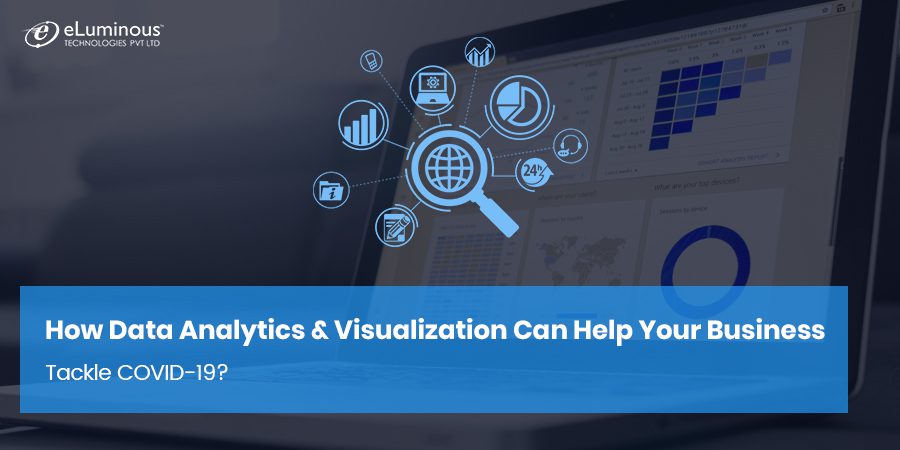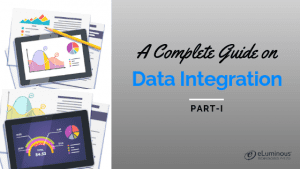The retail industry is not new to disruptions. It has withstood recessions, shifts in consumer preferences, and even greyish trade practices such as predatory or heavily discounted pricing by ecommerce companies.
While the sector didn’t exactly trump these challenges, it managed to stay afloat on the back of strengths such as a personalized shopping experience and the ability to touch and feel before buying.
However, COVID-19 proved to be one challenge too many as the pandemic forced stores to shut down, disrupted well-oiled (even if antiquated by digital era standards) supply chains, altered consumer behaviour in a way that seems irreversible, and accelerated digital transformation.
As the world slowly comes out of the pandemic’s grip, the retail sector will have to contend with these hurdles and create a business model that is more robust to such shocks in the future. And an important role in this retail industry fortification will be played by data analytics and AI (Artificial Intelligence).
If you’re part of a retail operation, read on to know how retail data analytics and business intelligence can help you tackle post-pandemic challenges and steer clear of your competitors.
COVID-19 Impact on Consumer Behaviour
Even before the pandemic, retailers saw the ‘ecommerce’ challenge coming. For instance, established retailers often sought our hire dedicated developer service to help them move online or find a balance between online and offline retail. They were also aware of the modern consumers’ tendency to use more than one channel on their shopping journey.
Despite this, retailers were caught unawares by the pandemic-induced lockdowns, which changed consumer behaviour in ways unimagined and towards digital. For instance, ecommerce sales in the US for Q2 2020 were up by 44.5% year-on-year. This when overall retail sales in the same period declined by 3.6%.
The sudden shift to online notwithstanding, consumers also displayed a greater readiness to switch from their preferred stores and brands. A McKinsey report showed that a massive 75% of consumers bought from a new brand and a significant 17% of them ditched their primary retail store.
While product availability can be a reason for this shift, there’s also some psychology at play here. Loyalty Science Lab’s research offers a possibility that this shift in preferences is caused by the feeling of uncertainty that consumers experience during situations such as this pandemic.
Read more: Why Medium Scale Enterprises Should Ditch Spreadsheets for Data Analytics?
How Data Analytics Can Help Retail Regain its Mojo
The challenges outlined above are by no means definitive. As more data trickles in, researchers and businesses are stumbling upon newer insights and problems that need to be addressed for retail to pick up again. That said, a major part of retail’s revival post the pandemic will be led by data analytics.
The reasoning behind this is simple. With the pandemic forcing so many transactions to go online, clickstream data will assume greater significance which in turn will push retail analytics to the forefront. In other words, data analytics will be the protagonist instead of the sidekick that it was before the pandemic hit.
Here are how data analytics and business intelligence can not only help revive retail but also empower it to tackle future uncertainties and consumer behaviour changes.
1) Demand Forecasting
Demand forecasting using predictive models was a bedrock of retail analytics before COVID-19 struck. But since these models predict future demand based on what and how consumers shopped in the past, they were rendered inadequate in the period immediately after lockdowns began and panic shopping set in.
For instance, if your previous forecasts singled out certain products getting sold more often during a particular time of the year, they simply couldn’t do the same during the pandemic as consumers stocked up heavily on essentials. Coupled with the disruptions to supply chains, this rendered predictive forecasts invalid.
The way around this conundrum is to re-evaluate your current predictive models and retrain them in keeping with your customers’ changing buying patterns. While at it, it’ll also be useful to build more granularity into these demand forecasting models. This will help you deal with future shocks in a more agile manner.
Read more: FranchisorPal: Why It’s the Perfect Pal for Franchise Businesses (Case Study)
2) Data Integration
With consumers using more than one channel even for a single transaction, data integration needs greater focus. The aim of data analytics is to improve your store’s overall customer experience, something that cannot be achieved if your customer data is disjointed and outdated.
For instance, the need to socially distance pushed a lot of people into the ‘order online, pick-up offline’ routine. Going forward, you will have to collect data from all the different touchpoints a consumer uses, which in turn will help you form a holistic view of them and offer a better service.
3) Remapping Customer Journeys
The change in customer behaviour after the pandemic began has also necessitated a remap of established customer journeys. For instance, many parents and children are now buying groceries remotely and having them delivered directly to each other.
Similarly, social gatherings have become virtual, thus also affecting the shopping associated with such occasions. A retail data analytics model post the pandemic will take into account these changes in the customer journey and buying patterns.
4) Greater Personalization
As mentioned previously, personalization in the form of individual attention and suggestions was one of the hallmarks of traditional retail. And though the pandemic put paid to that in the short term, personalization continues to remain a powerful incentive for consumers and will lead retail’s revival going forward.
With advanced AI-enabled data analytics and business intelligence, you can create one-of-a-kind user experiences through personalized communication and hyper-segmentation. The latter is important as traditional segmentation often clubs customers into a few large and static groups.
But with hyper-segmentation, you can create a large number of smaller customer groups that are not only dynamic but are also more accurately representative of their subjects’ preferences. This will help you create more targeted marketing campaigns, leading to better conversion rates and profitability.
5) Data-driven Decision Making
Though the world is in a better place than a year ago when it comes to the pandemic, it’s far away from being normal. For retailers, this means the uncertainty associated with COVID-19 is here to stay for a while. And while this might make gut-based decisions tempting, data should continue to drive business-critical decisions.
This can be achieved by keeping your models up to date by using real-time data to make operational decisions. Historic data and models are moot here because of the pandemic’s dynamic nature. But by making decisions based on what’s happening in your store and your customer’s behaviour, you can make your retail business more robust and prepared for uncertainty.
Over to You
While the COVID-19 pandemic will eventually peter out, its effect on consumer behaviour will linger around for a long time. As such, retail businesses that adjust to this new reality by basing their decisions on data analytics and business intelligence will gain a competitive edge in the long term.
If you’d like to know more about how retail data analytics can help your business grow in a post-pandemic world, get in touch with our BI consultant now.
Thank you for reading! If you liked this post, do subscribe to get informative posts about web and mobile development, data analytics, and eCommerce delivered to your inbox.
Digital Marketing Manager
Responsible for developing and managing web presence, Sarah has been associated with eLuminous Technologies for 7+ years. Strategic and innovative with a passion for Content Marketing and enhancing brand awareness. Administered all business marketing operations and advertisement campaigns that eventually increased web traffic. She works under the motto “Think like a Publisher, not a Marketer.”



